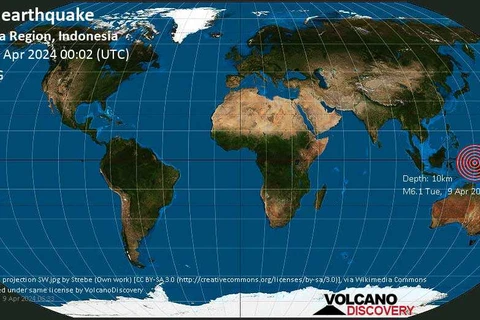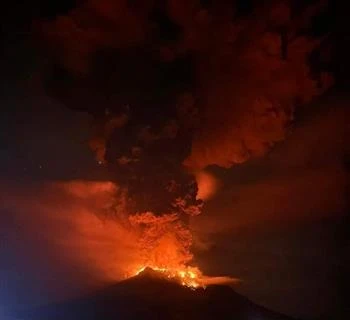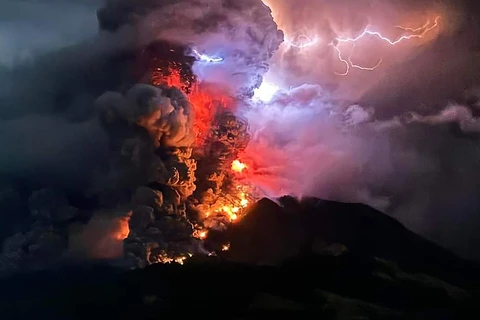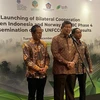 An undated photo of Puncak Jaya, Papua. According to Indonesian Meteorology, Climatology, and Geophysics Agency (BMKG), global warming has played a significant role in gradually thinning the glaciers atop Puncak Jaya, Papua, Indonesia. (Photo:Beritasatu.com)
An undated photo of Puncak Jaya, Papua. According to Indonesian Meteorology, Climatology, and Geophysics Agency (BMKG), global warming has played a significant role in gradually thinning the glaciers atop Puncak Jaya, Papua, Indonesia. (Photo:Beritasatu.com) Jakarta (VNA) - Global warming has played a key role in gradually thinning the glaciers atop Puncak Jaya, Papua, Indonesia, some of the few remaining tropical glaciers in the world, according to Indonesian Agency for Meteorology, Climatology, and Geophysics (BMKG).
It said that the glaciers' thickness decreased by about 4m, or 66%, in December last year compared to the same period in 2022, citing their latest monitoring.
Donaldi Permana, the Coordinator of the Research and Development Division of Climatology at the BMKG, said that this is likely related to the El Nino conditions in 2022-2023.
According to him, BMKG has been monitoring the glaciers on Puncak Jaya from 2009 to 2023. These glaciers are found at high elevations due to the mountain's altitude, which reaches over 4,800m above sea level.
From 2016 to 2022, the ice area reduced by an average 0.07 sq.km per year with the estimated total glacier area in April 2022 reaching 0.23 sq.km, he said.
In the 2022 monitoring, BMKG estimated that the remaining ice thickness in December 2022 was 6m. However, one year later, in December 2023, the latest data showed that the ice thickness was only 2m.
He noted that in addition to the thinning glaciers on Puncak Jaya, several mountains in tropical regions have also experienced ice melting, including Mount Kilimanjaro in Tanzania, Quelccaya in Peru, and Naimona'nyi in the Himalayas, Tibet.
He explained that 2023 was the hottest year with the global average temperature over the past 10 years, from 2014 to 2023, going up by 1.20 plus or minus 0.12 degrees Celsius.
Donaldi underlined the importance of reducing carbon dioxide emissions, including mitigation and adaptation measures such as tree planting, reducing and recycling plastic, transitioning to green energy, saving electricity, conserving fuel, and reducing the use of private vehicles./.























